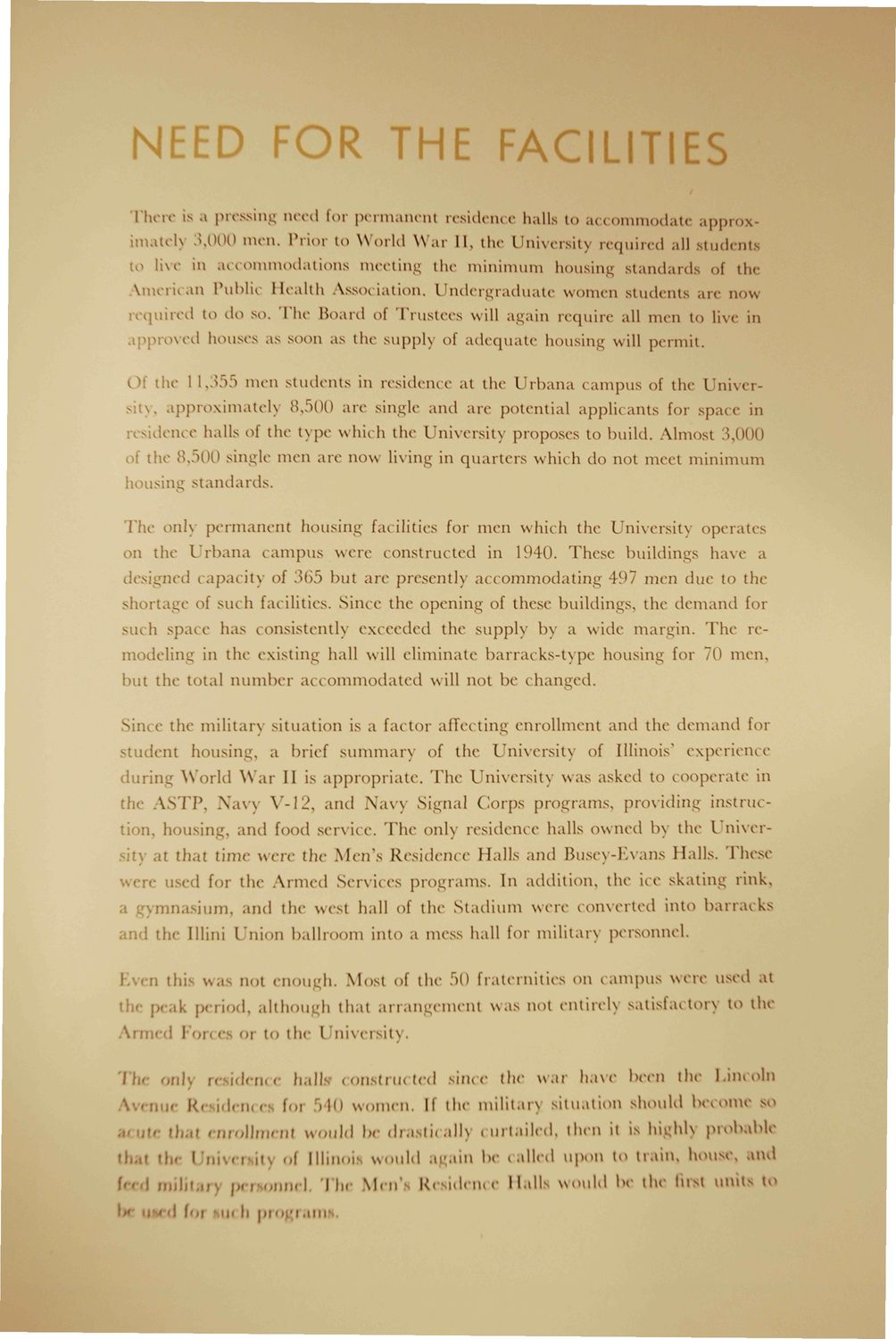| |
| |
Caption: Book - Housing Bond Issue of 1952
This is a reduced-resolution page image for fast online browsing.

EXTRACTED TEXT FROM PAGE:
NEED FOR THE FACILITIES There is a pressing need for permanent residence halls to accommodate approximate^ -\000 men. Prior to World War II, the University required all students to live in accommodations meeting the minimum housing standards of the American Public Health Association. Undergraduate women students are now required to do SO, The Hoard of Trustees will again require all men to live in approved houses as soon as the supply of adequate housing will permit. Of the 1 1,355 men students in residence at the Urbana campus of the Univerty, approximate!) 8,500 are single and are potential applicants for space in residence halls of the type which the University proposes to build. Almost 3,000 of the- l^:n)0 single men are now living in quarters which do not meet minimum housin standards. The only permanent housing facilities for men which the University operates on the Urbana campus were constructed in 1940. These buildings have a signed capacity of 365 but are presently accommodating 497 men due to the shortage of such Facilities. Since the opening of these buildings, the demand for such space has consistently exceeded the supply by a wide margin. The remodeling in the existing hall will eliminate barracks-type housing for 70 men, but the total number accommodated will not be changed. Since the military situation is a factor affecting enrollment and the demand for tudent housing, a brief s u m m a r y of the University of Illinois' experience during World W a r II is appropriate. T h e University w.is asked to cooperate in the A S T P , Navy V-12, and Navy Signal Corps programs, providing instruction, housing:, and food service. T h e onlv residence halls owned by the T i m e r ity at that time were the Men's Residence Halls and Busev-Kvans Halls. These w used for the Armed Service's programs. In addition, the ice skating rink, ymnasium, and the west hall of the Stadium were converted into barracks nd the Illini Union ballroom into a mess hall for military personnel, I.'. I thi u i h not enough. Most of the 50 fraternities on campus were used at tl - peak period, although that arrangement was not entirely satisfactory to the A 1 1 on - oi to the I fnivcrsity. lli- only residence halls constructed since the war have been the Lincoln \ i R, idena foi 540 women. If the military situation should become so acufc that enrollment would be drastically curtailed, then it is highly probabl that the University <1 Illinoia would again be called upon to train, house, and » I military pci onncl The Mcn'a K idence Halls would be the lost units to « I f()| • u< h pi o .nil
| |